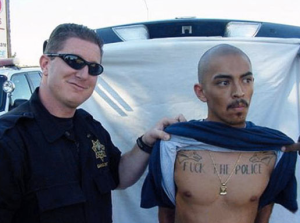We are increasingly being made aware of how important our environment is to all aspects of life (health, emotional well-being, access to education, opportunity, etc.) however, many don’t realize how housing policies in our country have had such a large impact on poverty, education, health and violence. Urban planning and housing policy is intimately tied to all aspects of violence prevalent in our communities. In turn, the physical environments that people live in define not only their educational and employment opportunities, but also their health outcomes. I was specifically interested in finding out how housing policies and programs that were implemented right after World War II shaped the characteristics of neighborhoods and the geographical divisions within cities that exist today.
In 1934 following the Great Depression, the federal banking system was restructured and the Federal Housing Administration (FHA) was created as part of a new deal program in order to help citizens purchase homes by privately lending money to home buyers. The FHA also allowed the government to control who could or could not purchase homes based on a variety of factors that more often than not included race as a criteria used to deny loans1. Redlining was one such practice induced by the FHA in order to prevent African Americans and other minorities from obtaining housing loans. In 1935, the FHA and the Home Owner’s Loan Corporation (HOLC) assessed 239 cities and created residential security maps, which were meant to outline economic and social stability, but in reality outlined neighborhoods on the basis of ethnic make-up. Based on these maps, many minority communities were ineligible for housing financing and were denied housing loans. Politically motivated practices such as redlining in predominantly Black and minority occupied neighborhoods created a “lack of equal access to credit, [which] had profound ramifications including fabulous enrichment for speculative contract sellers and their investors, debt peonage or impoverishment from many black contract buyers and an almost guaranteed decay of the communities in which such sales were concentrated2.”
Up until the 1960s, “federal housing agencies engaged in racial redlining, refusing to guarantee mortgages in inner city neighborhoods3.” The long-term effect of practices such as redlining included the separation of populations along ethnic lines, creating a sort of ‘urban apartheid,’ that can be directly traced back to the above government policies. Housing policy must be designed to address this history of spatial and racial socioeconomic segregation. One avenue through which this can be addressed is through mixed income housing that encourages socioeconomic integration of neighborhoods. An interesting example that we recently discussed in our class on violence was the preservation of socioeconomic integration of neighborhoods in Paris. A lack of elevators in many buildings in Paris led naturally to a social order where wealthy people lived on the ground floor (because they could afford a more expensive apartment where they didn’t need to climb the stairs), and poorer families lived on the higher floors (because they could not afford the more expensive apartments on the ground floors). As a result of this natural preservation of socioeconomic integration (simply due to lack of elevators), school systems in Parisian neighborhoods remain socioeconomically integrated, presenting equal opportunities for wealthy as well as poorer families.
An understanding of the historical forces that have instilled a legacy of racism and spatial segregation is key to moving forward with the structural changes that must be implemented to improve living conditions in zones of concentrated violence and inequality. Acknowledging the cumulative impact of years of politically motivated spatial segregation and installation of inequality is essential both at the level of public knowledge and governmental policy decision making. While much of the impacts of historical housing policy seem lacking in hope for change and progress, an important aspect to note is that the pride and sense of connection to a community can be extremely impactful on health including on levels of violence. Studies demonstrate that the health of new immigrant populations is often on equal levels as those of wealth Americans based on the fact that recent immigrants maintain strong connections and ties to their community. These positive health effects rapidly drop off in second and third generation immigrants. These studies offer promising avenues of hope, suggesting that strong family and community networks can counter many of the most difficult situations that people face and greatly affect an individuals’ resiliency to future insults. Thus, important interventions should not only include changes in housing policy that would promote socioeconomic integration of neighborhoods, and programs that would allow individuals to own their own homes, but should also include programs that foster a greater sense of community and increase ties and connections individuals feel towards their community.
1Ploys in the Hood, Raymond Arsenault
http://www.nytimes.com/2009/03/22/books/review/Arsenault-t.html?_r=0
2Why the Poor Stay Poor, Richard Thompson Ford
http://www.nytimes.com/2009/03/08/books/review/Ford-t.html?pagewanted=all
3 In Chicago, Real Estate and Race as a Volatile Mix, Dwight Garner
http://www.nytimes.com/2009/03/18/books/18garn.html







